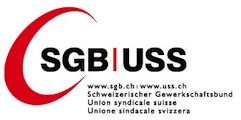Publications des institutions partenaires
Protest and the forum: forms of participation in the global justice movement
Institution partenaire
English / 01/01/2009
Why are social movement organizations deliberative? Structural and cultural determinants of internal decision making in the global justice movement
Institution partenaire
English / 01/01/2009
Neural correlates of value, risk, and risk aversion contributing to decision making under risk
Decision making under risk is central to human behavior. Economic decision theory suggests that value, risk, and risk aversion influence choice behavior. Although previous studies identified neural correlates of decision parameters, the contribution of these correlates to actual choices is unknown. In two different experiments, participants chose between risky and safe options. We...
Institution partenaire
English / 01/01/2009
Functional imaging of the human dopaminergic midbrain
Invasive recording of dopamine neurons in the substantia nigra and ventral tegmental area (SN/VTA) of behaving animals suggests a role for these neurons in reward learning and novelty processing. In humans, functional magnetic resonance imaging (fMRI) is currently the only non-invasive event-related method to measure SN/VTA activity, but it is debated to what extent fMRI enables...
Institution partenaire
English / 01/01/2009
Risk-dependent reward value signal in human prefrontal cortex
When making choices under uncertainty, people usually consider both the expected value and risk of each option, and choose the one with the higher utility. Expected value increases the expected utility of an option for all individuals. Risk increases the utility of an option for risk-seeking individuals, but decreases it for risk averse individuals. In 2 separate experiments, one...
Institution partenaire
English / 01/01/2009
Segregated and integrated coding of reward and punishment in the cingulate cortex
Reward and punishment have opposite affective value but are both processed by the cingulate cortex. However, it is unclear whether the positive and negative affective values of monetary reward and punishment are processed by separate or common subregions of the cingulate cortex. We performed a functional magnetic resonance imaging study using a free-choice task and compared cingulate...
Institution partenaire
English / 01/01/2009
Short-term temporal discounting of reward value in human ventral striatum
Delayed rewards lose their value for economic decisions and constitute weaker reinforcers for learning. Temporal discounting of reward value already occurs within a few seconds in animals, which allows investigations of the underlying neurophysiological mechanisms. However, it is difficult to relate these mechanisms to human discounting behavior, which is usually studied over days...
Institution partenaire
English / 01/01/2009
A parametric relief signal in human ventrolateral prefrontal cortex
People experience relief whenever outcomes are better than they would have been, had an alternative course of action been chosen. Here we investigated the neuronal basis of relief with functional resonance imaging in a choice task in which the outcome of the chosen option and that of the unchosen option were revealed sequentially. We found parametric activation increases in anterior...
Institution partenaire
English / 01/01/2009
Behavioral functions of dopamine neurons
This chapter reviews the extracellular studies of dopamine neurons in behaving animals. Topics covered include motor functions of dopamine neurons, reward functions of dopamine neurons, reward learning functions of dopamine neurons, economic value functions of dopamine neurons, and attention and novelty functions of dopamine neurons.
Institution partenaire
English / 01/01/2009
Electrophysiological correlates of reward processing in dopamine neurons
Institution partenaire
English / 01/01/2009
The NimStim set of facial expressions: judgments from untrained research participants
A set of face stimuli called the NimStim Set of Facial Expressions is described. The goal in creating this set was to provide facial expressions that untrained individuals, characteristic of research participants, would recognize. This set is large in number, multiracial, and available to the scientific community online. The results of psychometric evaluations of these stimuli are...
Institution partenaire
English / 01/01/2009
Self-control in decision-making involves modulation of the vmPFC valuation system
Every day, individuals make dozens of choices between an alternative with higher overall value and a more tempting but ultimately inferior option. Optimal decision-making requires self-control. We propose two hypotheses about the neurobiology of self-control: (i) Goal-directed decisions have their basis in a common value signal encoded in ventromedial prefrontal cortex (vmPFC), and (...
Institution partenaire
English / 01/01/2009
The bivalent side of the nucleus accumbens
An increasing body of evidence suggests that the nucleus accumbens (NAcc) is engaged in both incentive reward processes and in adaptive responses to conditioned and unconditioned aversive stimuli. Yet, it has been argued that NAcc activation to aversive stimuli may be a consequence of the rewarding effects of their termination, i.e., relief. To address this question we used fMRI to...
Institution partenaire
English / 01/01/2009
Odor quality coding and categorization in human posterior piriform cortex
Efficient recognition of odorous objects universally shapes animal behavior and is crucial for survival. To distinguish kin from nonkin, mate from nonmate and food from nonfood, organisms must be able to create meaningful perceptual representations of odor qualities and categories. It is currently unknown where and in what form the brain encodes information about odor quality. By...
Institution partenaire
English / 01/01/2009
Tax incentives for inefficient executive pay and reward for luck
Institution partenaire
English / 01/01/2009
Optimal impairment rules
We study the optimal accounting policy of a financially constrained firm that pledges assets to raise debt capital for financing a risky project. The accounting system provides information about the value of the collateral. Absent accounting regulation, the optimal accounting system is conditionally conservative: it recognizes an impairment loss if the asset value is below a certain...
Institution partenaire
English / 01/01/2009
Pages
Le portail de l'information économique suisse
© 2016 Infonet Economy












